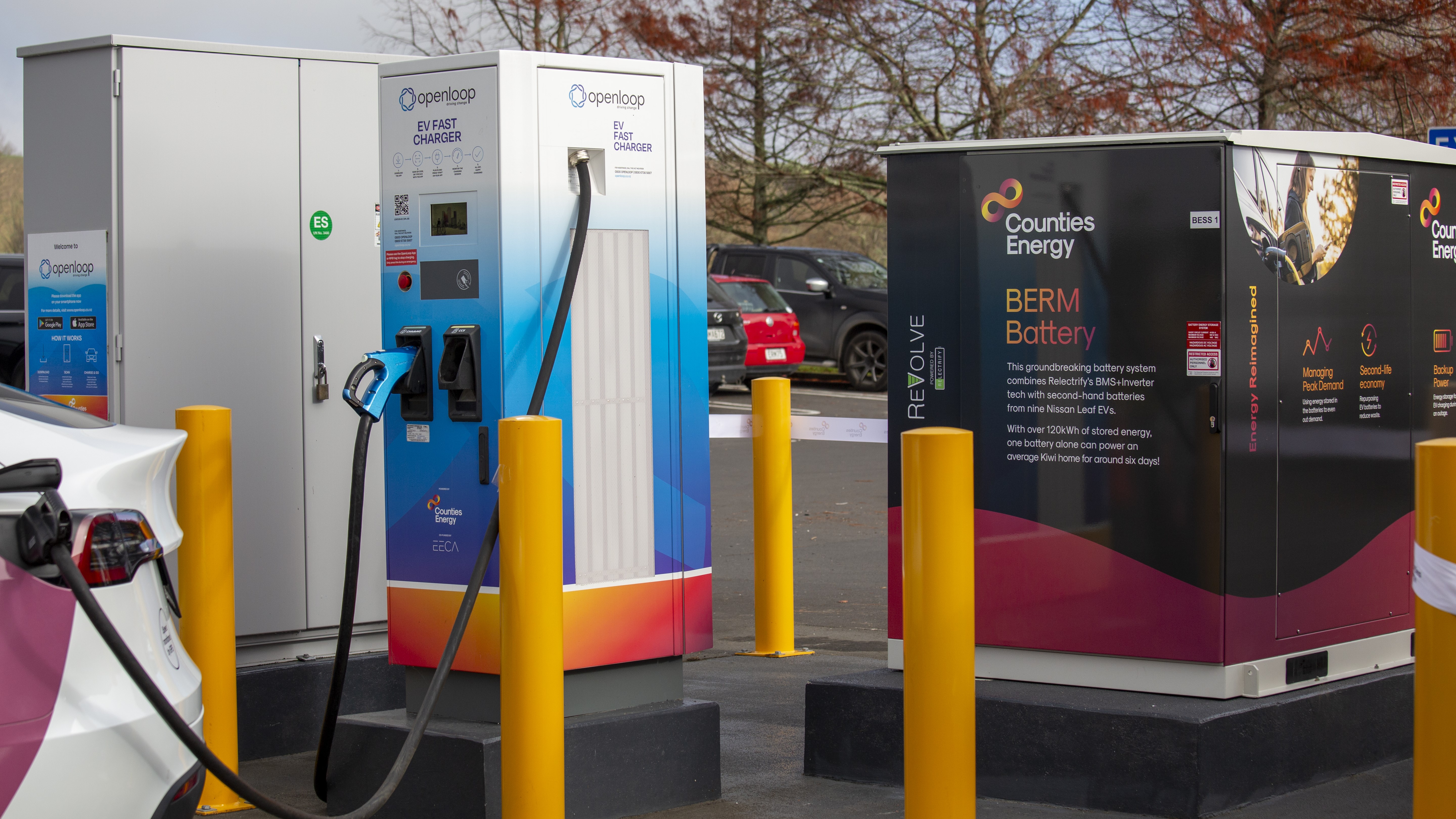AWARDS FINALIST: Counties Energy – Second-life EV batteries

In a first for New Zealand, Counties Energy combined innovative thinking with a second-life use for electric vehicle (EV) batteries to change the way electricity capacity is provided.
This new approach not only enhances flexibility and timeliness, it also reduces costs, is cleaner, and provides a more secure energy supply for customers.
As EV adoption accelerates globally, it is expected there will be a parallel rise in EV battery replacements. As the batteries are retired with typically 50-80 per cent of their capacity intact, that represents an untapped resource for secondary applications.
In New Zealand, where facilities to repurpose the batteries are scarce, the default practice has been to ship them overseas, increasing their carbon footprint and creating logistical challenges due to the hazardous nature of lithium-ion batteries.
Plug n’ play
Counties Energy recognised the need for a cost-effective and timely solution to address an increase in demand for high-powered EV chargers, which require substantial low-voltage network capacity.
Innovative thinking saw Counties develop a 'plug n' play' flexible infrastructure solution using second-life EV batteries.
The batteries act as a buffer system, accommodating the dynamic requirements of high-powered EV chargers while integrating seamlessly with existing grid capacity. The solution avoids the need for extensive grid upgrades and provides a quicker connection option as well as a solution for what to do with end-of-life EV batteries.
In conjunction with Australian battery technology company Relectrify, Counties developed the modular battery system comprising nine second-hand Nissan Leaf batteries.
The system, capable of storing over 120 kWh of energy, underwent rigorous testing over two years, including obtaining safety certifications and developing comprehensive assembly, installation, and commissioning processes.
The final product meets stringent IEC battery safety standards and the AS/NZS 4777.2:2020 inverter standard.
Real-world deployment
In October, two battery systems were deployed at the Mercer Service Centre on State Highway 1, where the 140kW available grid capacity was insufficient for the required 210kW of EV chargers.
The battery system provided the necessary 70kW buffer, enabling the installation of two high-powered DC chargers.
The integration of the two battery systems and two high-powered DC chargers was a first for New Zealand.
Beyond the immediate commercial advantages, the use of second-life batteries aligns with Counties’ sustainability goals.
Second-life batteries have been shown to reduce carbon emissions by up to 46 per cent compared to new lithium-ion batteries.
The system enables costly infrastructure investments to be deferred until clearer demand patterns emerge. In remote rural communities it can add to resilience and provide backup power. Battery systems also offer a cleaner and more sustainable alternative to the more traditional diesel generators.
Commercialising the product
Counties Energy is the first assembler of infrastructure-grade, second-life battery systems in New Zealand.
The absence of a blueprint meant thinking outside the box and managing risks to create and establish industry standards.
Counties Energy has since commercialised the product, selling assembled battery systems to enable flexible infrastructure solutions for other industry participants wanting to deploy EV chargers quickly without traditional infrastructure upgrades.
The Innovation in Energy Award category is sponsored by Ara Ake.